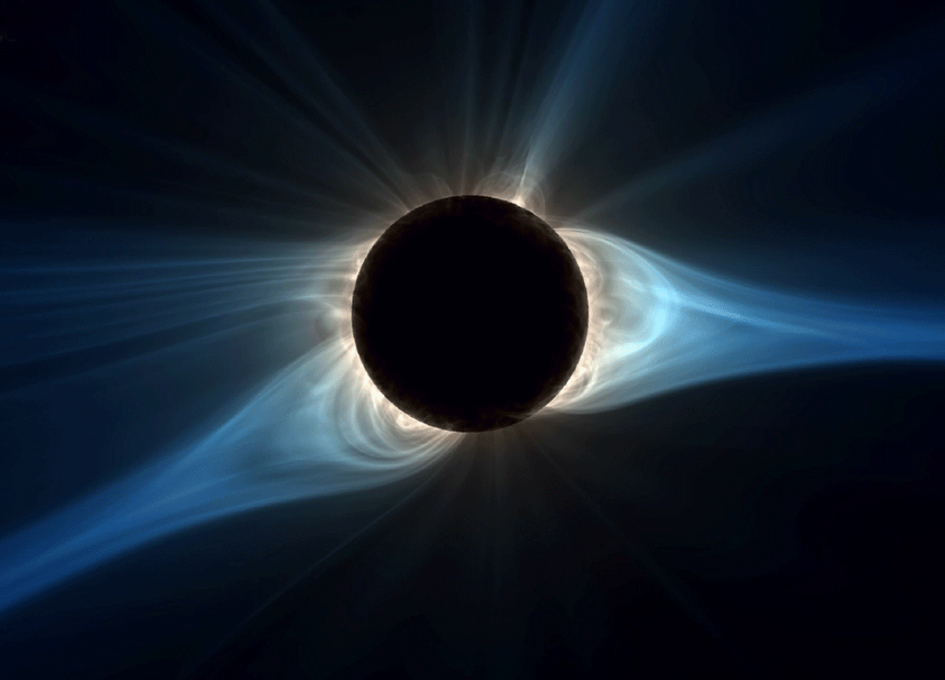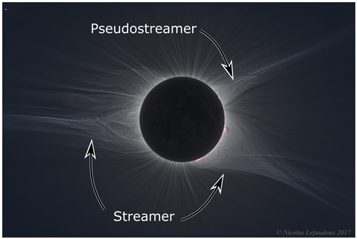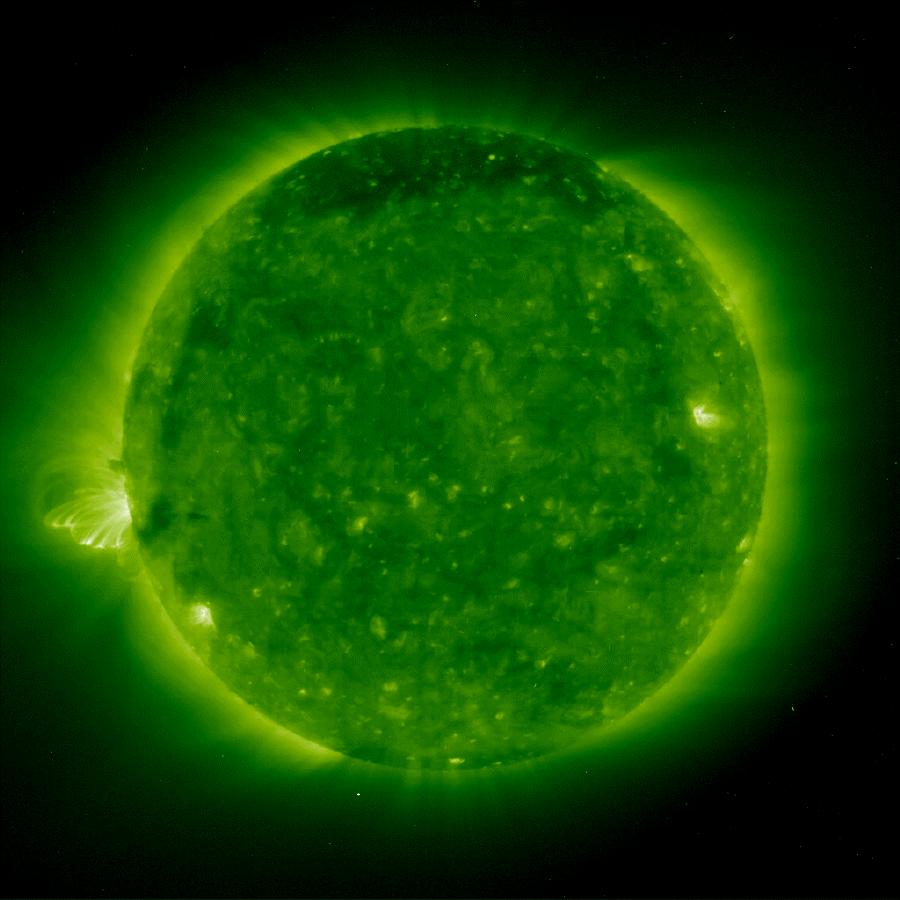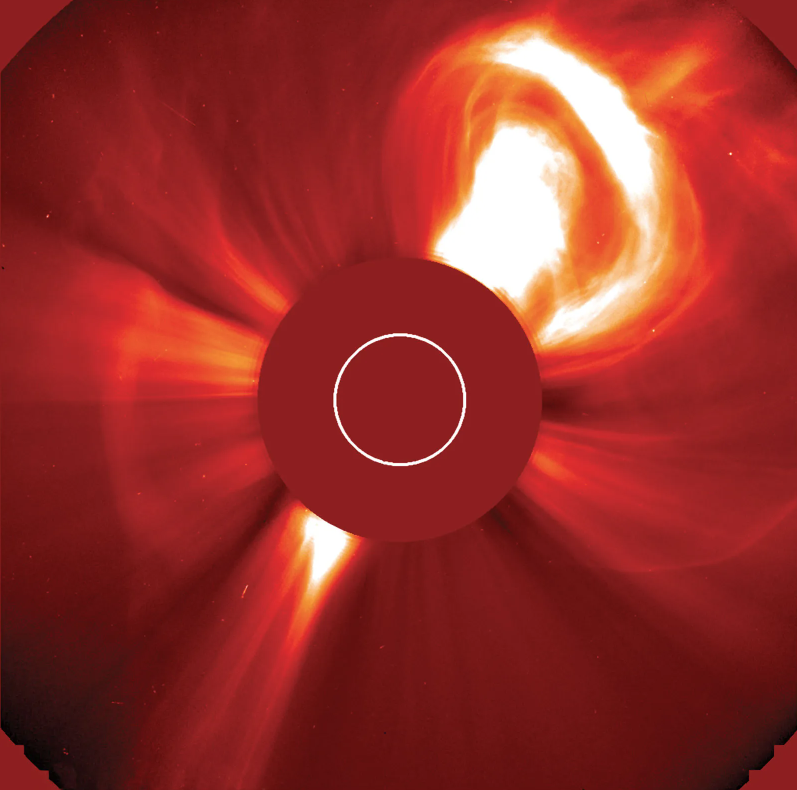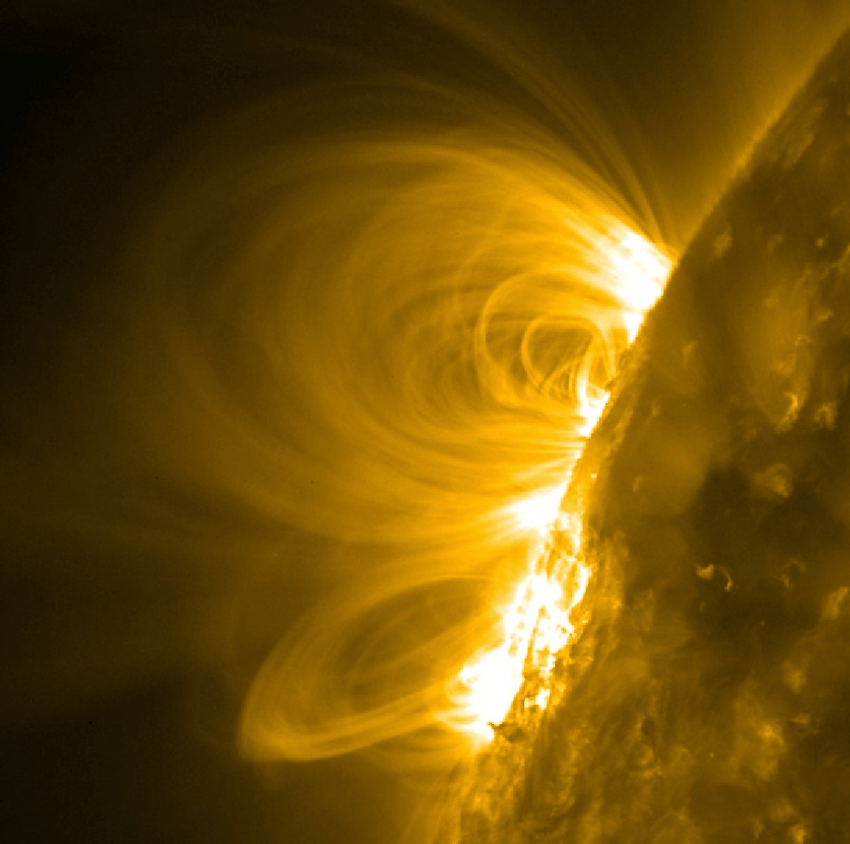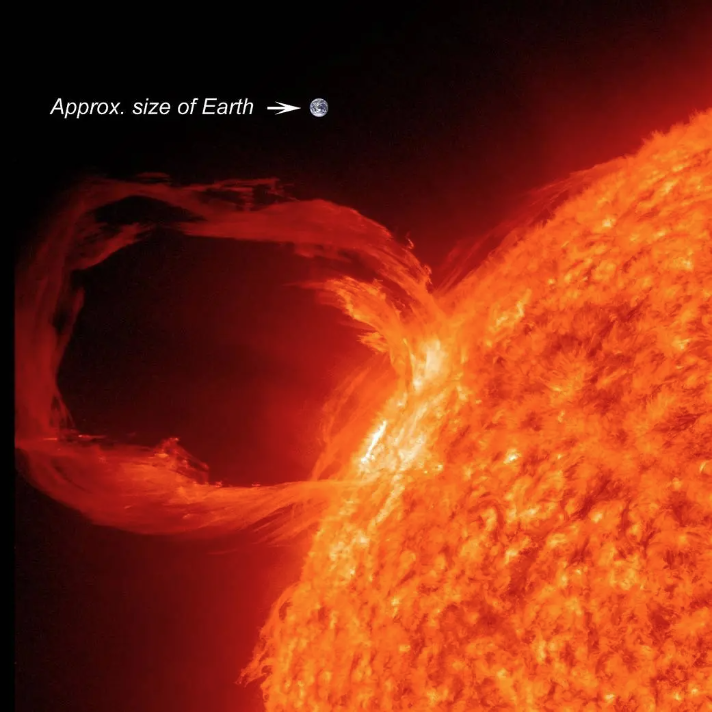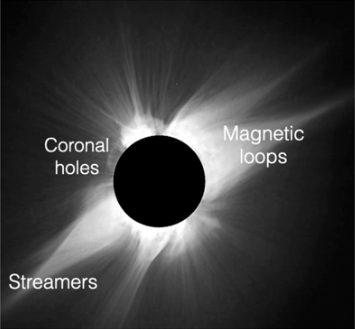These are elongated, cusp-like structures that are easily observable during total solar eclipses. Their name derives from 19th century spiked helmets that were popular in Europe, and Prussia, in particular. They are bright because they are made up of scattered light by electrons in the corona. The “spike” part, above the cusp marks the location of the heliospheric current sheet, which separates magnetic fields of different polarity. Helmet streamers are the dominant structure that can be seen during the eclipse and can be seen in the PSI predictions.
Also known as unipolar-streamers, these are similar in structure to helmet streamers, but are usually more compact. Magnetically, they are quite different though: Whereas helmet streamers connect regions of opposite polarity, pseudo-streamers connect coronal holes of the same polarity. Because of this, the bright “spike” above their closed loops are of the same polarity, and there’s no current sheet separating them. See our prediction for several good examples of evolving pseudo-streamers.
These are elongated features that emanate from the Sun’s poles at solar minimum (hence the name polar plumes), but may appear from any latitude at solar maximum. In reality, they are associated with collimated jets of plasma released by a process known as magnetic reconnection. However, they are also present in steady-state solutions such as from the MAS model (see our results from the 2017 and 2019 eclipse predictions). You can also see plumes appearing in our prediction.
CMEs are powerful eruptions of solar material that can occur in the corona. They release massive amounts of energy and can influence space weather near Earth. Although they don't always appear in eclipse observations, because the April 8th event is happening near solar maximum, when the number of CMEs increases dramatically, if we’re really lucky, a CME may be present during totality and may show up as a massive loop or “donut” structure blasting its way through the overlying streamer structure.
These are arched structures formed by magnetic fields, filled with emitting plasma. They connect regions of different magnetic polarity on the Sun’s surface, and their brightness and evolution informs us about coronal heating. Coronal loops contribute to the overall shape of the corona and may appear as bright arcs during totality. When pulled out by the solar wind, these loops may form the larger streamers we see in the simulations and observations. Coronal loops are visible on the EUV & X-Ray prediction pages.
Prominences are magnificent structures that are potentially visible during the eclipse as reddish or pinkish protuberances (or “flame-like” tongues extending from the Sun). They are, in fact, cooler, denser plasma suspended above the Sun’s surface by magnetic forces.
These are regions in the corona where the magnetic field lines extend out into space, allowing high-speed solar wind to escape. Coronal holes appear as dark, cooler areas during an eclipse. They are associated with faster solar wind and geomagnetic activity. At solar minimum, we see coronal holes over the poles of the Sun separated by large helmet streamers around the equator. But at solar maximum, when the magnetic field is much more complicated, this simple picture is broken and coronal holes may be difficult to identify at all.
